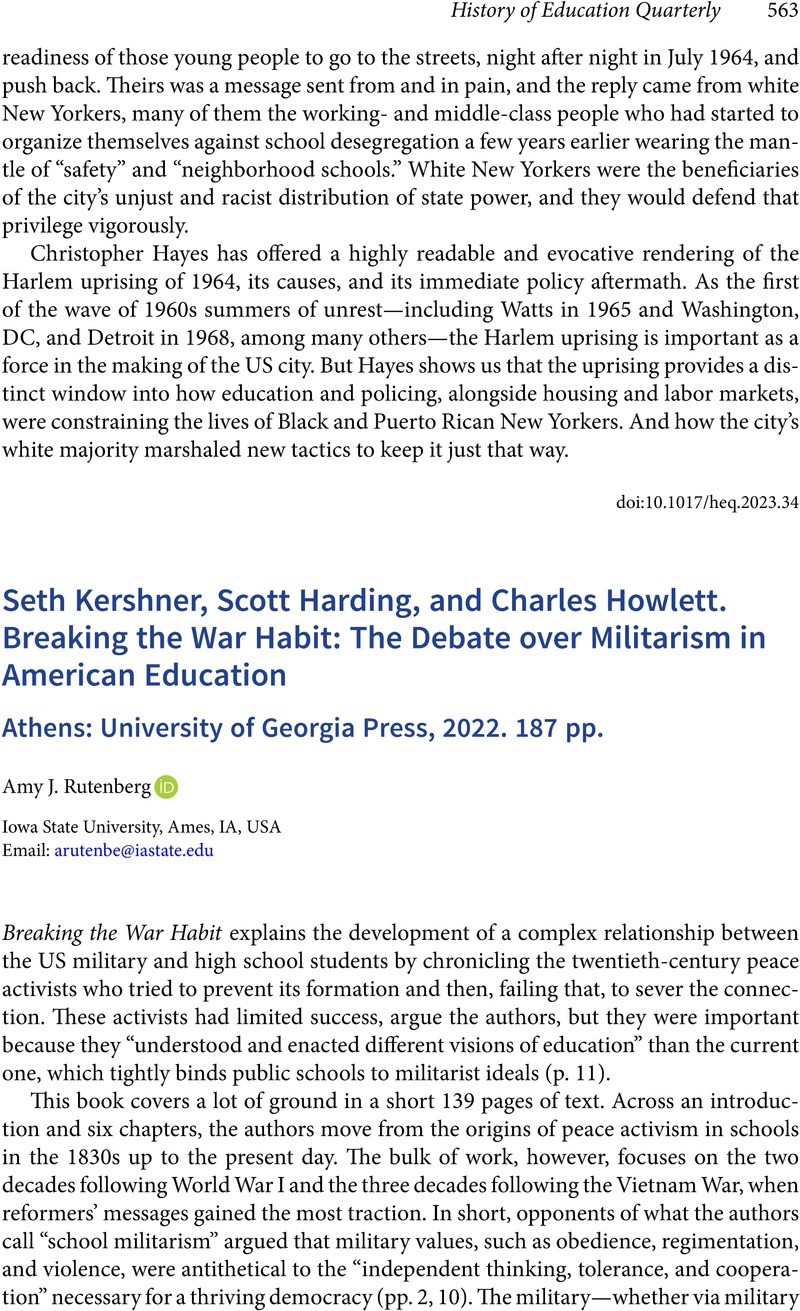No CrossRef data available.
Published online by Cambridge University Press: 15 November 2023

1 See Neiberg, Michael S., Making Citizen-Soldiers: ROTC and the Ideology of American Military Service (Cambridge, MA: Harvard University Press)Google Scholar.